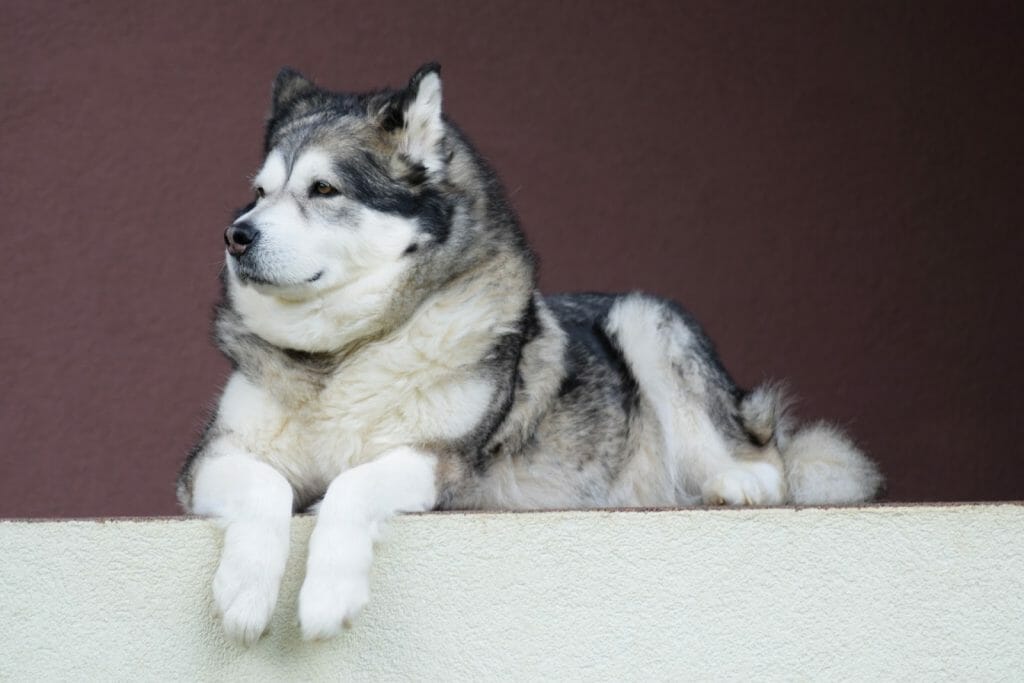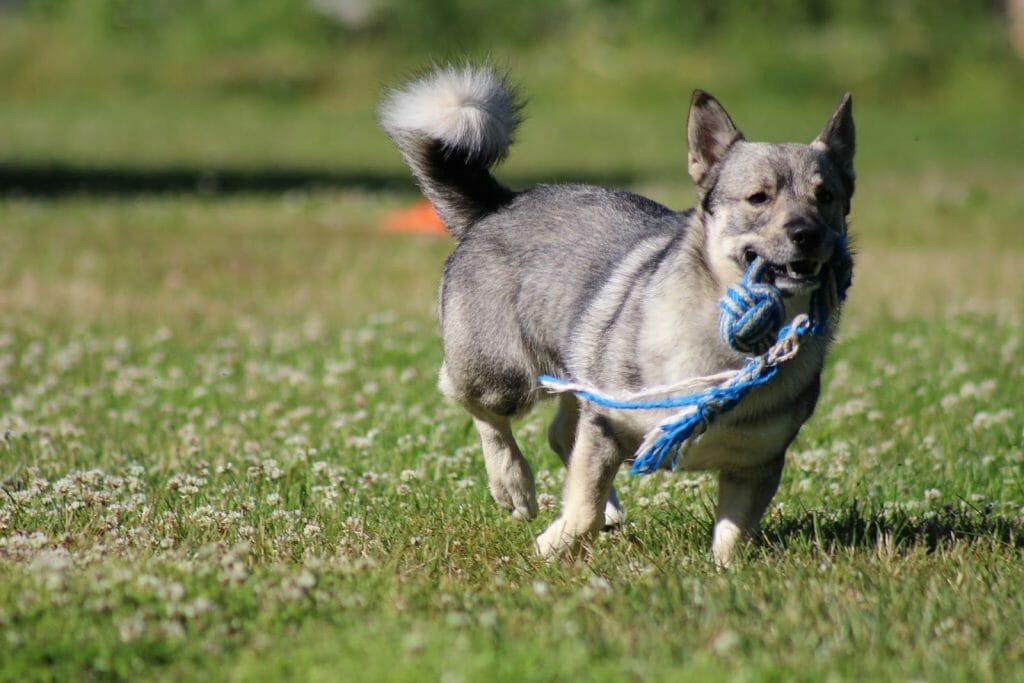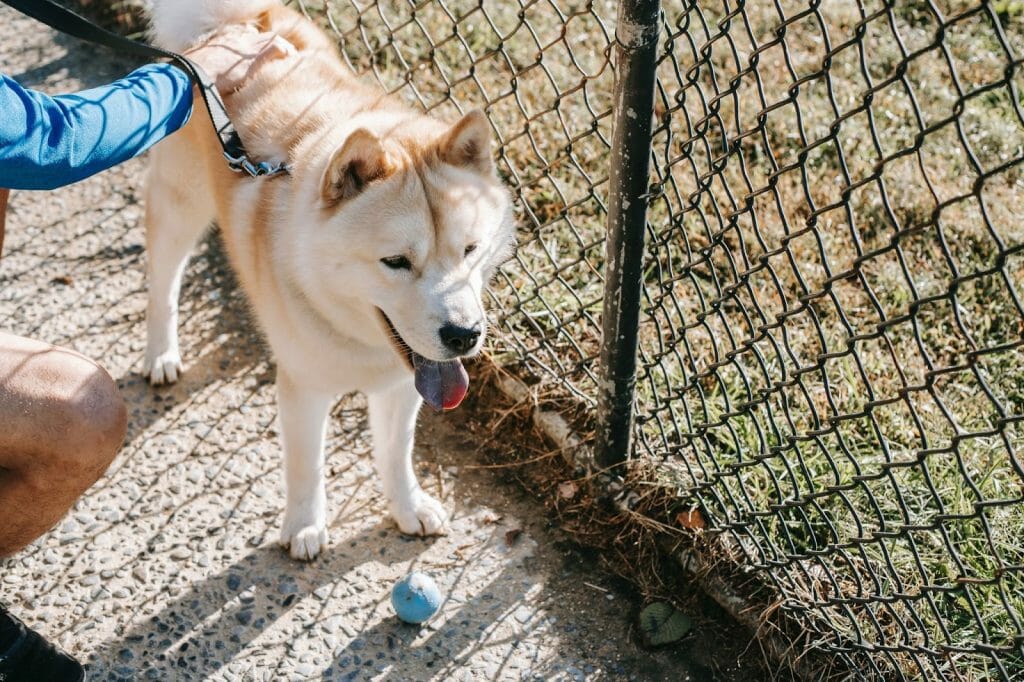Dogs That Look Like a Husky: 17 Breeds to Choose From
The Siberian Husky is one magnificent breed known for its striking eyes, intimidating appeal, and wolf-like appearance. Such a dog requires an owner who will be just as active as he is and who can cope with his seasonal heavy shedding.
If unfortunately, this stunning breed isn’t the right one for you, you still have plenty of other choices to consider. These dogs will amaze you due to their striking resemblance to the Husky but the difference shows through their personality, other features, and more.
Table of Contents
1. Alaskan Malamute


The first one to be recognized is the Alaskan Malamute. It’s fairly obvious as he features a wolf-like appearance which makes people oftentimes mistake him for a Husky. Their difference is set in their sizes and the Malamute dog is generally taller and heavier than the other.
Such a big-boned dog showcases a powerful and proportionate build, impressive broad shoulders, and dense, waterproof double-coat. Just like the Husky, this canine was bred to pull carts and sleds in harsh arctic conditions. The Malamute’s load is much heavier and pulled on longer though.
As a working breed, the Alaskan Malamute would require a daily outlet to let out his high levels of energy. Owners would agree that he can show a stubborn nature, but this can be handled through training, socialization, and patience.
2. Alaskan Klee Kai


The Alaskan Klee Kai is sometimes referred to as the smaller version of the Husky breed. Even though he has descended from Alaskan and Siberian Huskies, this smaller pooch is mainly bred for companionship. To add, he’s a relatively new dog.
The similar coat markings, build, and features contribute to his uncanny resemblance to the Husky yet, unfortunately, the American Kennel Club (AKC) is not recognizing him as an official breed. The American Rare Breed Association and the United Kennel Club, among others, do though.
According to the standards, an adult Alaskan Klee Kai should stand tall at about 13 to 15 inches. This explains why he’s a mini-Husky as some would often say.
Despite the similarity in appearance, Klee Kais and Huskies have opposite temperaments. The Klee Kai dog is usually shy and wary about strangers. Nonetheless, the dog remains vocal when it comes to his needs.
3. Finnish Spitz


Next up is the Finnish Spitz which mainly comes in red-gold, gold, and red. Putting aside the obvious difference in their coat colors, the facial features and coat type are what make this breed look like a spitting image of the Siberian Husky.
It’s not only about appearance but also behavior. The Finnish Spitz is one talkative breed and has a heavy inclination to bark and make noises in general. This trait sets him up as an excellent watchdog.
Moreover, just like the Husky, this breed has loads of energy, so a busy working day for him would be very beneficial. The right owner of this dog has no toddlers at home due to this canine’s chasing instinct.
4. Tamaskan Dog


Interestingly, the Tamaskan breed is a hybrid of Alaskan Malamute, Siberian Husky, and German Shepherd. One advantage of getting this dog would be his less shedding rate in comparison to the Husky.
With him having superb lineages, it’s no surprise if he constantly thirsts for plays and activities. Give in to his exercise requirements so he won’t end up becoming a destructive dog.
Remarkably, despite the somewhat serious appearance of the Tamaskan Dogs, a lot of them are used for rescue operations, assistance, and therapy.
5. Samoyed


If you want a dog that has the Husky features but in a fluffier, cloudy-ish coat, then the Samoyed is what you’re looking for. In Europe, this breed is commonly known as Bjelkier.
Samoyed dogs are working dogs too that would need constant physical and mental stimulation. They’re not for hypersensitive owners, but with regular grooming, shedding can be manageable.
What draws a lot of dog lovers to the Samoyed breed isn’t just because of his white fluffy coat but as well as his trainability, loyalty, and intelligence. An apartment-style of living can be suitable for him which isn’t usually the case with a Husky.
6. Utonagan


Another wolf-looking, Husky-like dog is the Utonagan. His coming about was made possible by crossbreeding five dogs which include a Siberian Husky, a German Shepherd, and an Alaskan Malamute.
As a hybrid dog, the AKC doesn’t include him in their list of official breeds. Nonetheless, the ideal appearance of this canine includes being robust in build with natural coat colors that may include gray, white, and black.
It’s normal to feel taken aback by this dog’s appearance, but this shouldn’t cause you to think he’s aggressive because he isn’t. He’s typically even-tempered, friendly, and gentle. Still, he’s not right for inexperienced people.
7. Swedish Vallhund


Another adorable Husky-like dog that comes in a rather smaller and shorter stature is a Spitz-herding dog namely the Swedish Vallhund. Him, bearing the hallmarks of a Siberian Husky’s appearance, strike his popularity to greater heights!
This dog notably has a dense, furry coat, prick ears, and narrow snouts with a build that looks the same as that of a Corgi. As mentioned, this pooch would nip the cattle that don’t follow directions in the ankle area if he’s raised to be a herding dog.
The Swedish Vallhund is an extreme people-pleaser. This can speak a lot about his trainability level.
8. Northern Inuit


If you are a Game of Thrones fan, the Northern Inuit Dog would instantly pop into your mind if asked about what breed can resemble the Husky. As you know, the dire wolves were played by dogs of this breed.
Even despite not being named an official breed, his appearance on the popular television series made him popular worldwide. He’s known to be smart, active, and highly teachable.
On top of that, the coat type, face, build, and overall image are just some of the reasons why he’s on this list.
9. Saarloos Wolfdog


A Saarloos Wolfdog looks close to the Tamaskan canine we featured earlier. He exhibits wolf-like traits but that doesn’t mean he’s not fit to be domesticated. When raised right, the Saarloos Wolfdog won’t show aggression and would even sometimes be shy, wary, and stubborn.
The best environment you can provide to this canine is certainly not a city-type. Most Saarloos dogs can be found enjoying their free-roaming activity in rural areas. A large yard and spacious home would be ideal as long as there are no kids around.
This is a rare breed too, by the way, making it hard to find a breeder. If ever you do, you’ll witness a few wolf-like behaviors.
10. Czechoslovakian Vlcak Dog


It’s completely understandable to mistake the Czechoslovakian Vlcak Dog as the Husky. After all, he has upright ears, a wolf-like face, and a coat that are undeniably indistinguishable not just to the Husky but as well as to the other breeds on this list.
Czechoslovakian Vlcak Dogs are sometimes used as service dogs that would work alongside rescue teams, firemen, and policemen. Before, this canine was trained to be an attack dog, but it’s no longer a common practice.
The right owner must be able to handle his demanding requirements which include immense training. Though he may be loyal to his family members, a household with small kids should make you reconsider getting him.
11. Shikoku Dog


Native to Japan, the Shikoku Dog or Kochi-ken was initially bred to hunt in the Kochi mountains. He may come in three colors which are sesame, black sesame, and red sesame. With his coat type and looks, he surely will be mistaken for the Husky.
He’s a nice addition to families who can guarantee him an active lifestyle. Without some tasks to do during the day, this dog can be destructive.
A home with a spacious yard would be his favorite spot so he can freely chase after small animals like squirrels. Socialization and training are also a must so he won’t end up becoming a problematic pet.
12. American Eskimo


American Eskimos look like Samoyeds due to their white coats, but this doesn’t hold us back from getting him listed. This dog is wolf-like, furry, and may even pass as a dog that looks like a stuffed animal.
If this is what you are getting, prepare to train him with loads of basic to complex dog training. He can be aggressive, uncontrollable, and hyper sometimes but having a smooth dynamic with your dog can help you understand what he needs.
Several owners are happy they got this dog thanks to his high trainability level. The variations in sizes are appealing to some too as American Eskimos can be standard, miniature, or toy.
13. Keeshond


Keeshonds may not bear the typical coat markings that are present in a Husky, but the alert ears, snouts, and foxy appearance make up for it. The AKC would refer to this breed often as “spitzy”.
The resemblance of this dog to the Husky can be linked to his facial similarity to the Samoyed and even Pomeranians. You can easily notice the abundance of hair that wraps his body, and it needs not be said that grooming is essential.
Most likely, this dog will end up getting more attached to one person in the family and act like a velcro pet. Don’t hesitate to bring him wherever you go as he can keep up with you.
14. Norwegian Elkhound


Norwegian Elkhounds weren’t elk hunters. They used to go after moose instead. If you’re into hunting and active dogs, this would be your best pick. Moreover, they look so similar to the ever-popular Huskies.
Despite this uncanny resemblance, both dogs are not related at all. They do share certain personality traits though like having high prey drive and a need for extraneous activities.
These Elkhounds do make good pets as they’re loyal, affectionate, amiable, and fun. You just have to find out your compatibility in all major aspects such as preference and lifestyle.
15. West Siberian Laika


The first thing you’d notice from the West Siberian Laika dog is his similar Husky build. This Russian Spitz-type hunting dog would sometimes be called WSL too. Other animals he resembles are coyotes and wolves.
WSL dogs don’t emit dog odor which is a plus for clean freak owners. Their sense of smell is worth noting too. Naturally, the guard hairs are rougher while the undercoat is softer and smoother.
Although he can be brought to an apartment, the WSL needs to be exposed to outdoor environments to satisfy his need for regular mental stimulation.
16. Native American Indian Dog


The name would already suggest that the Native American Indian Dog or NAID has been historically crossbred with the Native American dog breeds. The size ranges from large to giant and anyone who comes across him may think they’re seeing a real wolf.
Features-wise, there’s no denying that he carries the same ear shape, face, and tail manner as the Husky. He’s a good watchdog and the looks are menacing enough to scare off burglars.
NAIDS tend to be sociable, caring, and friendly toward other kids and dogs. Due to his massiveness, monitoring remains imperative.
17. Akita Inu


The breed that finishes off the list hails from Japan. Though he appears cuddly and approachable, this dog can show aggression and overprotectiveness which can be remedied through early training and exposure to faces.
Coat colors are far from the same as that of the Siberian Husky, but the fluffiness, density, the face, ears, and snout are what qualify him in this category.
Expect the Akita Inu to exhibit a strong personality, so before you get one, make sure you have the traits of a pack leader. This will make him obey and respect you even more.
